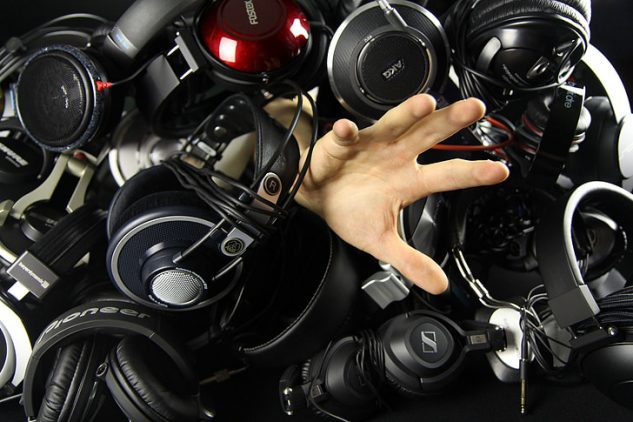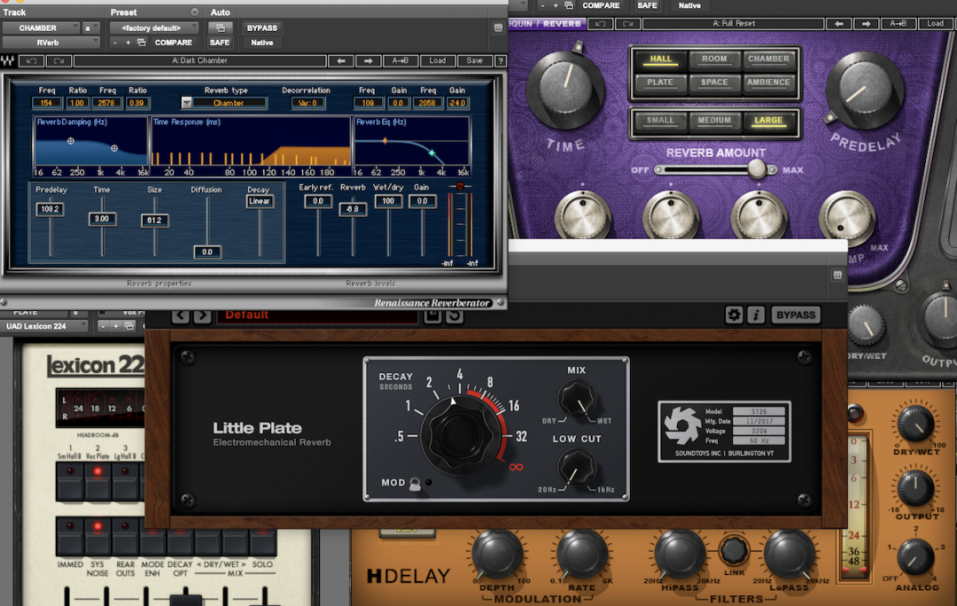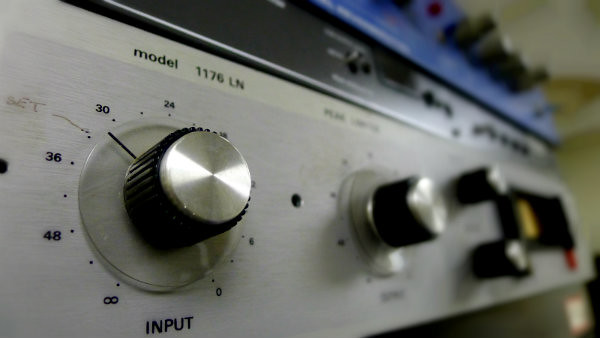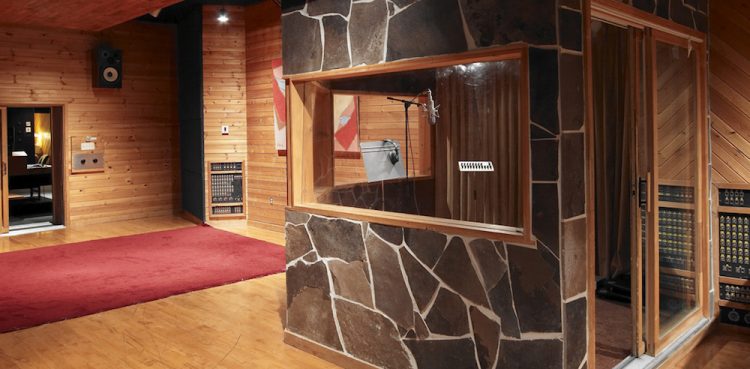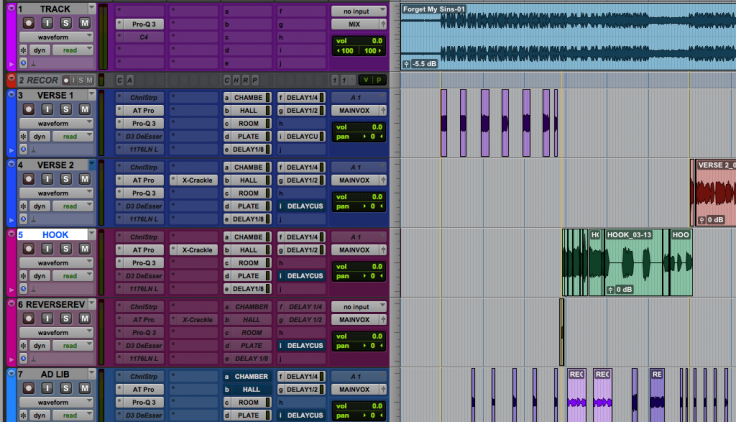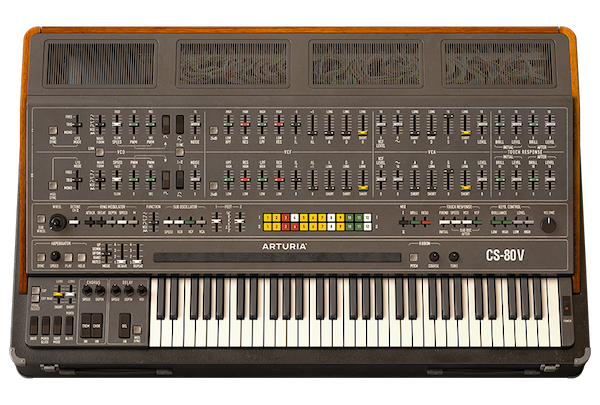Short for Musical Instrument Digital Interface, MIDI is a standard which includes a communications protocol, digital interface, and physical connectors for different electronic instruments, computers, and other audio devices. Perhaps most importantly to musicians, it allows us to play, record, and edit virtual/electronic instruments…
Mixing with Headphones: What You Need to Know
There tend to be varying degrees of thought on mixing with headphones. Some of us are in bedrooms, our parent’s house, married with kids (not wanting to wake them up at 3am!), etc. It’s understandable that in certain cases mixing…
A Starter’s Guide to Recording Voice-Overs
There are tons of different reasons why you might want to get into recording voice-overs. We sometimes associate VO recording with film or TV post-production, in a process called “automated dialogue replacement” (ADR)—but in the grand scheme of things, that’s…
Simple Ways to Increase Loudness in Your Mix
By definition, loudness is a subjective perception of volume. It varies from person to person based on a variety of physiology and psychological factors. It’s also frequently confused with physical measures of volume, such as sound pressure level represented by…
Step Sequencing: What It Is and How to Use It
Step sequencing is a MIDI-based tool that divides a measure of music into a pre-determined number of note values called “steps.” Each step laid out in the software can then trigger notes and other MIDI information you supply it. Like most…
The Top 5 Most Common Drum Programming Mistakes
Drum samples and plugins have gotten so good that it’s never been a better time for realistic drum programming. As a matter of fact, it’s totally viable for solo artists to release projects with convincing programmed drums. But even with…
Using MIDI Controllers to Play Virtual Instruments
MIDI controllers are keyboards that let you play virtual instruments and transmit MIDI information to your DAW for recording. Most of the time they connect to your computer via USB for easy integration and very little set-up. They’re about as…
Stem Mastering Explained
If you’ve heard “stem mastering” mentioned in recent years, you’re not alone if you’re wondering what the heck it means! We’ll take a quick look at the “regular” mastering process and how stem mastering differs from it. Let’s refresh. What…
Creative Reverb and Delay Tricks for Vocals
Vocals are the centerpiece to any song and generally require a bit more attention than basic rhythm tracks. Since the human voice is the most expressive instrument, you can have a lot of fun mixing them. There’s lots of pretty…
The Shure SM57, the Most Popular Dynamic Mic Ever Made
The Shure SM57 is the definitive workhorse microphone. It’s ubiquitous across the world, from home project studios to world-renowned places like Sunset Sound. The microphone is rock solid, pragmatic in cost and usage, and highly effective. It’s impossible to miss…
6 Reverb Tips for Clean and Creative Mixes
Learning how to use reverb is an essential mixing skill. Time-based effects have the ability to add dimension to your mix, and give instruments their own sonic space. Reverb is often used to push mix elements further back, but it…
Mix Bus Compression Tips for Better Mixes Today
Every professional mix/master you’ve heard has benefitted from a splash of bus compression. It adds what we call “glue” to a mix by smoothing out the overall dynamic range of the material. Done well, mix bus compression can take your…
Kick Drum: Killer Tips for the Best Sounding Low End
The kick drum is one of the most important elements of any mix. Together with bass, it forms the backbone of a song and establishes the groove which grabs listeners’ attention. It’s a challenge to get the kick sounding its…
How to Use Parallel Compression
Parallel compression, also called New York compression, is a form of upward dynamic control. An instrument’s dynamic range is reduced not by squashing the peaks, but by bringing up the quietest parts in the material, adding greater detail and excitement…
How to Record Acoustic Guitar at Home | 7 Tips
Recording acoustic guitar for the first time can be a challenge. Usually what kind of mic to use and where to put it are the two biggest hurdles for beginners when it comes to getting the best sound, but there…
The Basics of Recording Vocals
Recording vocals seems like it should be pretty simple. You get a mic set up, the artist stands in front of it, and you’re ready to go…While this is the basic set-up, there’s a bit more to it if you…
6 Key Ingredients to a Better Vocal Production
If you’re struggling to fine-tune your vocal production chops, don’t be alarmed. Every time a new vocalist steps up to the mic, there are a bunch of variables at play which can skew our results from session to session. Keeping…
The Benefits of Recording a Scratch Track
A scratch track is a rough playthrough of a song, or section of a song, that acts as a guide while recording other instruments. It’s usually just a couple instruments, like a rhythm guitar and vocal playing along to a…
Sound Synthesis: Basics of Granular and Wavetable Synthesis
Whether we’re aware of it, many of us are using sound synthesis technology everyday. As engineers and producers, we’re often relying on virtual instruments and plugins which use granular and wavetable synthesis to make sounds! Granular synthesis is the technology…
Mastering in the Box – Tutorial & Plugins
If you plan to put the final polish on your mixes at home, you’ll need to understand mastering in the box. Some techniques involve things like additional EQ, compression, M/S processing, and limiting to finalize a song before release. Generally…
Song Mastering: Preparing Your Tracks to Master
Song mastering is the final step in getting your tracks ready to release. What a mastering engineer does differently than a mixer is make final, sometimes very subtle, tweaks to make something sound polished and “commercial.” You can learn how…
Guidelines on How to EQ 14 Common Instruments
Understanding how to EQ–probably the most used tool available to engineers–is essential. Sometimes it’s as simple as high-passing an instrument, while other cases require more precision. Either way, EQ is fundamental in making mix elements sound more or less defined,…
Plate Reverb Plugins vs. the Real Thing
On one side is the real EMT 140 plate reverb unit: a 600-pound, 8′ x 4′ behemoth introduced in 1957 as one of the first kinds of artificial reverb. On the other is a wide variety of plate reverb plugins…
Which Audio Editor and Mixer (DAW) is Right for Me?
An audio editor and mixer, simply called a DAW, is the software used to record, edit, mix, and master music, podcasts, post production projects, and anything else audio-related. The truth is, there’s no “best” DAW—only the one that you know…
How to Master a Song at Home with These Simple Steps
Mastering is the last step in preparing a song or album for release. The overall sonic aesthetic should be well established by the time a song reaches mastering. What you or a dedicated mastering engineer can do is make final,…
Some of the Best Drum VSTs for Programmed Drums
Drum VSTs are one of the quickest and easiest means to lock down your song’s backbone. As a matter of fact, the software has gotten so good that it isn’t uncommon for solo artists to release finished albums with entirely…
The DIY Vocal Booth for Home Studios
One factor in getting better sounding vocal takes at home is a DIY vocal booth. It doesn’t have to be fancy, and it especially doesn’t have to cost a lot of money. If your vocal recordings are suffering but you’re…
Copyright in Music: Sample Clearance vs. Fair Use
Like any artist, songwriters have a tendency to borrow from their influences. Especially in hip hop and related genres, producers will sample music from another artist to flip it and make it their own. The issue with this, though, is…
How to Mix Vocals to a 2-Track Instrumental
Mixing vocals to a 2-track instrumental is something every engineer will encounter at some point. It’s especially common in hip hop/pop, where artists routinely download pre-mixed instrumentals online and bring them to a studio to record. The challenge with learning…
Compression Techniques: The Multiband Compressor
Learning to use a compressor is one of the most important mixing skills you can develop. Compression is all over mixes, even becoming the sound we associate with loud, modern pop mixing. If there’s anything you want to really understand, it’s…
The Best Free VST Synth Plugins
If you’re a music producer or songwriter, virtual instruments and software synthesizers are your best friend. And if you haven’t already developed an unhealthy obsession with plugins, you will eventually! The only problem with the plugin game is that it’s…
How to Master a Song: Understanding the Goal of Mastering
Mastering is the final step in preparing a song or album for commercial release. This means that it takes place after mixing, so the overall sonic aesthetic should be well established by the time a song reaches mastering. What a mastering engineer…
Which Vocal Compressor is Right for the Mix?
We’ve stressed the importance of mixing vocals time and time again! Because lyrics are what average listeners immediately identify with, making a singer sound great should almost always be a priority. Amongst other tools, the perfect vocal compressor for the…
Modular Synthesis: The Most Powerful Synthesizers Ever
Modular synthesis is one of the most powerful sound design and music production tools you can use. From the outside, though, it looks pretty confusing…Even understanding the basics can take a while if you don’t know where to start. Luckily,…
Optimizing Mixes for Streaming
We recently had the opportunity to sit down with the incredibly talented Warren Sokol to talk about mixing/mastering for streaming release. Some of the main topics we covered are LUFS metering, the different codecs streaming services use to encode masters,…
Summing Mixer: Digital or Analog?
Which summing mixer is right for you is dependent on how you like to work. In a small project studio where you’re working in the box, an outboard summing mixer is probably an afterthought. But if you have the budget…
Free Audio Editors: Cutting Tracks on the Cheap!
Regardless of the type of audio you’re working with, there’s a good chance you’ll want software to help you mix, edit, or directly record the source. It doesn’t matter whether you’re producing music, podcasts, or audio to sync with video;…
What Is Dithering | How Is It Used for Music Production?
There’s lots of terminology in digital audio that we’ve heard before, but aren’t quite sure what it is or how it works. If dither, or “dithering,” is one of those terms for you, you’re not the only one! Dither is…
Understanding Granular Synthesis
Granular synthesis is the operative force behind many plugins and DAW functions we use all the time. When it was first introduced, it was incredibly CPU heavy and confined to offline processing only. Now we have incredibly quick processing speeds…
Home Recording Studio Setup Basics
Everyone’s home recording studio setup varies a little bit. Much of it is dependent on room size, budget, and what you plan to do with it. In a lot of cases, a laptop, audio interface, and a set of headphones…
A Beginner’s Guide to Sidechain Compression
Sidechain compression is an intermediate level mixing technique that allows you to set an alternate input signal source from the track on which the compressor is inserted. For instance, if you place a compressor on the bass guitar and “sidechain”…
Mixing Vocals: The Produce Like A Pro Master List
Have you ever had trouble getting a vocal to sit right in the mix? Have you ever felt underwhelmed by the overall tonality of a vocal, whether it’s too thin or perhaps too muffled? Does the vocal feel too wet…
Reverb Mixing Tricks to Elevate Your Mix
Learning how to use reverb is an essential mixing skill. Time-based effects have the ability to add width and dimension to your mix, and give instruments their own sonic space. Reverb is often used to push mix elements further back,…
Reference Tracks: How to Use Them and Mistakes to Avoid
Reference tracks are used as a guideline while mixing. They can be supplied by the artist to demonstrate a desired aesthetic, or chosen by the mix engineer as a standard to go by. Using reference tracks can help us craft…
What is Reverse Reverb? Should I Be Using It?
Reverse reverb, sometimes called reverse echo or reverse regeneration, simply takes the reverb tail of any instrument and reverses it. Creating it is a matter of printing the wet signal of a reversed audio track. Reverse reverb is typically accompanied…
The Best Tips for Producing and Mixing Guitars
A huge part of what we do as producers and engineers is not only make things sound great, but also make sure our musicians are inspired along the way. This is true for virtually all aspects of the music production…
15 Essential Mixing Tips for Better Mixes Today
Mixing music requires technical ability as well as the creativity to make a song interesting to listeners. Mix engineers firstly possess the technical knowledge of audio signal flow, DAW and/or console operation, and how to use signal processors, whether in…
Beginner’s Guide to Wider Stereo Image
If your mixes feel flat and narrow, like everything is stuck between the speakers, then you should put some work into the stereo image! But don’t reach for a widening plugin just yet—there are simple ways to achieve better stereo…
Drum Compression: Top Tips from the Pros
Massive. Punchy. Hard-hitting and larger-than-life. These are all words we use to describe the sounds we want out of our drums! But how do we go about getting that modern mix sound…? Drum compression is one of the key ways to…
Choosing Software Synthesizers for Your Home Studio
If you’re a music producer or songwriter, software synthesizers are your best friend. Not only are they super inexpensive compared to hardware, they sound just as good! Plus, a lot of them come with gigabytes and gigabytes worth of sounds…


